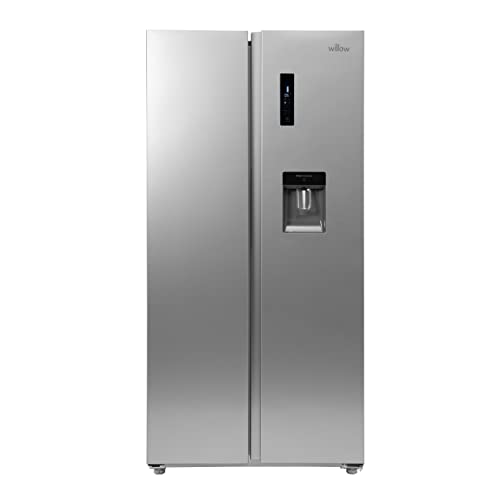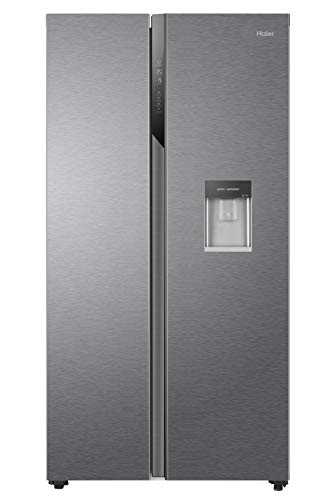Company Overview
-
Founded Date December 12, 1980
-
Posted Jobs 0
-
Categories Domestics
Company Description
10 Fridges And Freezers-Related Fridges And Freezers-Related Projects That Will Stretch Your Creativity
Understanding Fridges and Freezers: The Essential Kitchen Appliances
Fridges and freezers are two of the most necessary devices in contemporary cooking areas. These home appliances serve a vital role in food conservation and waste reduction by guaranteeing that perishable items remain fresh and safe for usage. This short article explores the numerous kinds of fridges and freezers, their performances, and essential factors to consider for selection and upkeep.

Kinds of Refrigerators
The marketplace uses a range of refrigerator types, each designed to satisfy different customer requirements. Below is a list of the most common types of fridges:
-
Top-Freezer Refrigerators
- Most common type.
- Freezer compartment is located above the refrigerator area.
- Typically more budget friendly and energy-efficient.
-
Bottom-Freezer Refrigerators
- Freezer is situated at the bottom.
- Permits simpler access to fresh products at eye level.
- Typically features pull-out drawers for much better organization.
-
Side-by-Side Refrigerators
- Refrigerator and freezer sections are nearby.
- Perfect for narrow kitchen areas and enables easy access to both compartments.
- Often features water and ice dispensers.
-
French Door Refrigerators
- Integrates a bottom freezer with double doors at the top.
- Offers ample storage and Refridgerator Uk trendy styles.
- Frequently consists of features like temperature-controlled drawers.
-
Compact Refrigerators
- Smaller sized size ideal for limited areas.
- Frequently used in dormitory spaces, small apartment or condos, or as secondary fridges.
Table 1: Comparison of Refrigerator Types
| Type | Benefits | Downsides | Normal Size |
|---|---|---|---|
| Top-Freezer | Cost effective, energy-efficient | Less convenient access to the freezer | 14-30 cu. ft. |
| Bottom-Freezer | Much easier access to fresh food | Freezer can be harder to organize | 19-30 cu. ft. |
| Side-by-Side | Easy access, water/ice dispenser | Narrow vs. storage area | 22-30 cu. ft. |
| French Door | Stylish, spacious, arranged | More pricey | 20-30+ cu. ft. |
| Compact | Space-saving, portable | Minimal storage | 1.7-5.5 cu. ft. |
Types of Freezers
Freezers are an equally important home appliance for food preservation. They are available in various designs developed to fit different family requirements. Consider the list below types:
-
Upright Freezers
- Run like a standard refrigerator with vertical storage.
- Easier to organize with racks and compartments.
-
Chest Freezers
- Large, horizontal style normally providing more storage space.
- Maintains temperature levels much better during power blackouts.
- More energy-efficient than upright models.
-
Portable Freezers

- Compact systems ideal for outdoor activities or little spaces.
- Often used for camping trips or as short-lived storage.
Table 2: Comparison of Freezer Types
| Type | Advantages | Disadvantages | Typical Size |
|---|---|---|---|
| Upright Freezer | Easier to organize | Less energy-efficient, more floor space | 5-20 cu. ft. |
| Chest Freezer | Holds more products, energy-efficient | Harder to arrange | 5-25 cu. ft. |
| Portable Freezer | Compact and versatile | Restricted storage capability | 1-10 cu. ft. |
Key Features to Consider
When choosing a fridge or freezer, consumers ought to bear in mind several functions that can improve functionality:
- Energy Efficiency: Look for designs with the ENERGY STAR certification to conserve on electrical power bills.
- Storage Capacity: Evaluate storage needs based on family size and eating habits.
- Temperature level Control: Some devices use digital controls for accurate temperature level settings.
- Adjustable Shelving: Customizable shelving enables optimum organization.
- Water and Ice Dispenser: Offers convenience however can use up valuable area inside.
- Sound Level: Sound ratings can influence convenience, particularly in open-concept homes.
Advantages and disadvantages of Having a Fridge and Freezer
While fridges and freezers are essential innovations, they also have particular advantages and drawbacks:
| Pros | Cons |
|---|---|
| Preserve food lifespan and lower waste | Require routine upkeep |
| Permit bulk buying and meal prepping | Can be expensive to acquire and run |
| Offer convenience and fast access to food | Occupy considerable cooking area area |
Upkeep Tips
To make sure durability and ideal efficiency of fridges and freezers, consider the following maintenance pointers:
- Regular Cleaning: Clean the exterior and interior regularly to avoid accumulation of dirt and germs.
- Inspect Seals: Inspect door seals routinely for leakages to maintain efficiency.
- Temperature Settings: Keep the fridge at 34-38 ° F and the freezer at 0 ° F for optimum food conservation.
- Defrost as Needed: Chest freezers should be thawed routinely to maintain effectiveness.
- Clear Air Vents: Ensure that air flow isn’t blocked to enhance energy effectiveness.
FAQs About Fridges and Freezers
Q1: How long can food be stored in a freezer?A: Most foods can be kept in a freezer for several months. Meats and poultry often last 4-12 months, while veggies can last as much as 8-12 months.
Q2: How often must I clean my fridge and freezer?A: It is a good idea to clean your fridge and freezer every 3 to 6 months, or as required when spills occur. Q3: Can I put hot food straight in the fridge?A: It is recommended to cool hot food to space temperature before placing it in the fridge to prevent
raising the temperature inside the device. Q4: Why is my fridge running constantly?A: This might be due to a malfunctioning thermostat, blocked coils, or door seals that aren’t working properly. Fridges and freezers are indispensable
properties to modern homes, offering essential services for food storage and preservation.
Comprehending the different types, functions, and upkeep requirements can help consumers pick the ideal appliances for their needs and maximize their functionality. Accepting energy-efficient designs not only supports sustainable practices however likewise adds to significant cost savings on energy expenses, making informed choices more vital than ever.


